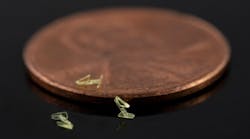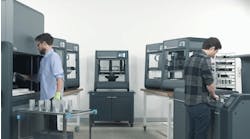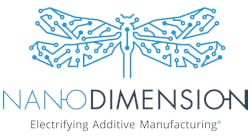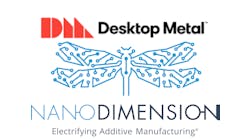Micro 3D printing: When tiny parts mean big impact
By John Kawola, CEO‑Global of Boston Micro Fabrication (BMF)
Most conversations around additive manufacturing have focused on printing larger and larger parts, yet many of the world’s products are actually getting smaller and smaller. Think of all the tiny parts that are nestled into the handheld electronics we use on a daily basis, for example, or within the devices that make new forms of microscopic exploration and implantation possible in the medical field.
We call this "miniaturization"—the trend to manufacture smaller mechanical, optical and electronic products, medical devices, and much more. While the parts themselves are small, the amount of time, money and effort it takes to design, prototype and test them is actually quite large. The smaller the part, the greater the need for accuracy and precision, and traditionally, the harder that is for manufacturers to achieve.
Until recently, these tiny parts were thought of as out-of-reach for additive manufacturing due to these challenging requirements, but new technological advancements have made the promise of microscale 3D printing a reality—enabling manufacturers to print industrial-quality parts down to two microns—and it’s set to make a big impact on the industry moving forward.
Here’s how:
Breaking down cost and innovation barriers
One major limitation to miniaturization has been the high cost to effectively prototype and produce small parts using traditional manufacturing methods, such as micro-injection molding and CNC machining. The smaller and more detailed the part, typically, the higher the cost and the longer the wait to get it. These issues are only further amplified and repeated if the prototype does not exactly replicate the intended end-use part, forcing the manufacturer to start over.
But there’s also no question that additive manufacturing generally loses its appeal as parts get smaller. For years, challenges with precision and accuracy have caused innovation roadblocks for engineers and manufacturers looking to develop small, high-resolution parts. There simply have not been any good 3D printing alternatives due to lack of technology with the ability to print with the right resolution and at scale.
This combination—the high costs associated with traditional methods and the lack of capable 3D printing technology—has left many of the industries that produce small components (think microfluidic chips and components, MEMS devices, microfilters and RF waveguides) out of traditional macro-scale additive manufacturing completely.
That is until now.
3D printing technologies such as SLA, DLP and a combination of the two called Projection Micro Stereolithography (PµSL) can finally support micro 3D printing and produce ultra-high-precision, micro-sized parts that are suitable both for rapid prototyping and production. This technological feat is set to break down barriers and spark innovation across many industries, but particularly for those that were traditionally left out.
From prototyping to production
Most manufacturers understand that prototyping is a vital and necessary step that provides the time needed to refine the design, fix mistakes, and optimize a product for production. Despite this importance, the aforementioned high costs have forced many of the companies to skip the prototyping step altogether, which often leads to dire consequences when production is initiated and ends up costing more money in the long run.
Producing small parts may be expensive using traditional methods, but without prototyping companies may need to rework or scrap the mold entirely if a change is necessary, wasting money, time and resources. This is where advancements in 3D printing technology can make a big initial business impact—it reintroduces the critical step of prototyping back into the process at a fraction of the cost.
And while better 3D printing technology is set to be a game-changer for prototyping, it also introduces a more cost-effective method for putting the parts into actual production. For larger parts, the point at which injection molding and other traditional manufacturing methods becomes cheaper than 3D printing is fairly low. With small, high-precision parts, the high cost of tooling compared to the low cost of material vastly changes this math. When producing small parts, manufacturing the final products using 3D printing quickly turns out to be much more cost-effective.
The miniaturization trend is not slowing down any time soon. Parts will continue to get smaller and more complex, but businesses no longer need to worry about larger headaches and higher costs now that micro 3D printing is a viable option. For all manufacturers, but particularly those traditionally left out of additive manufacturing, micro 3D printing is set to deliver big business impact and inspire breakthroughs for years to come. We are only at the tip of the iceberg of innovation.



